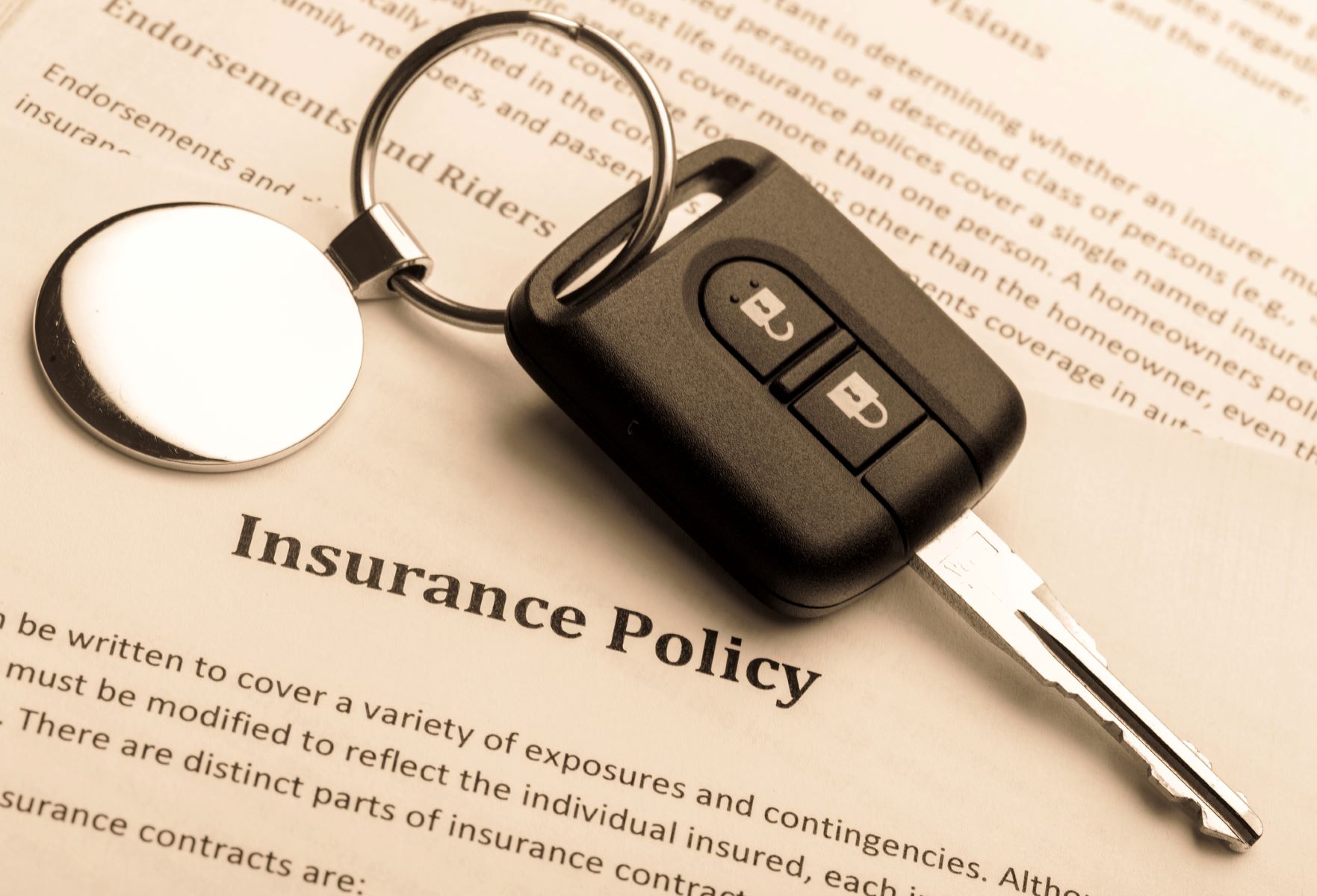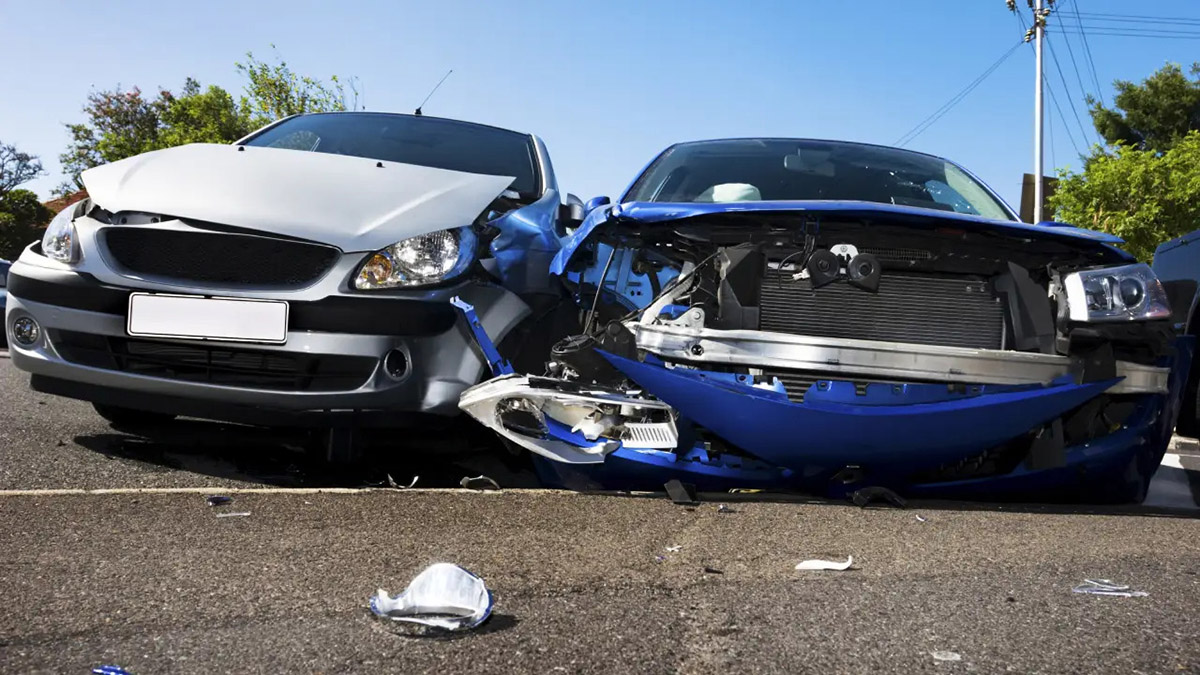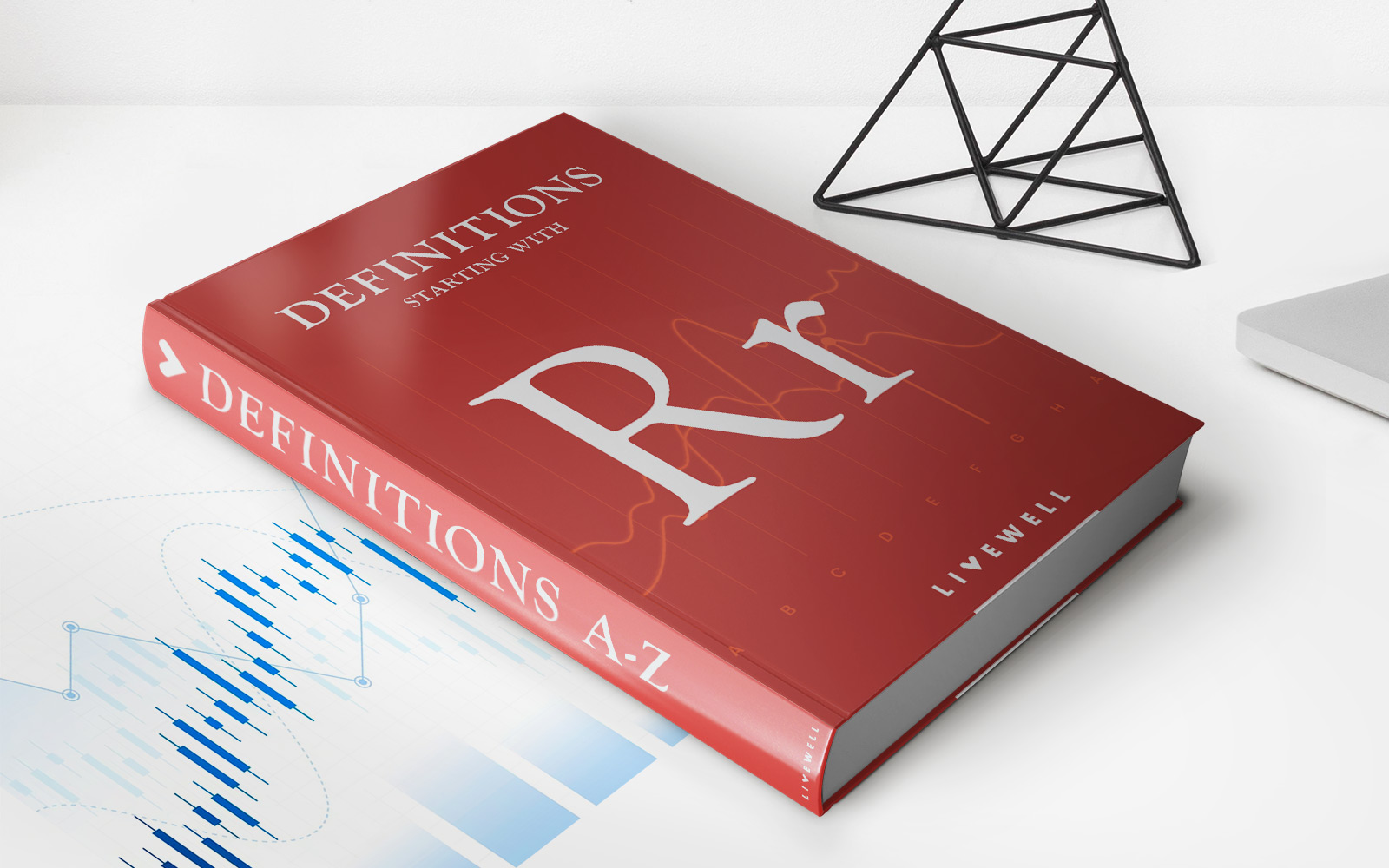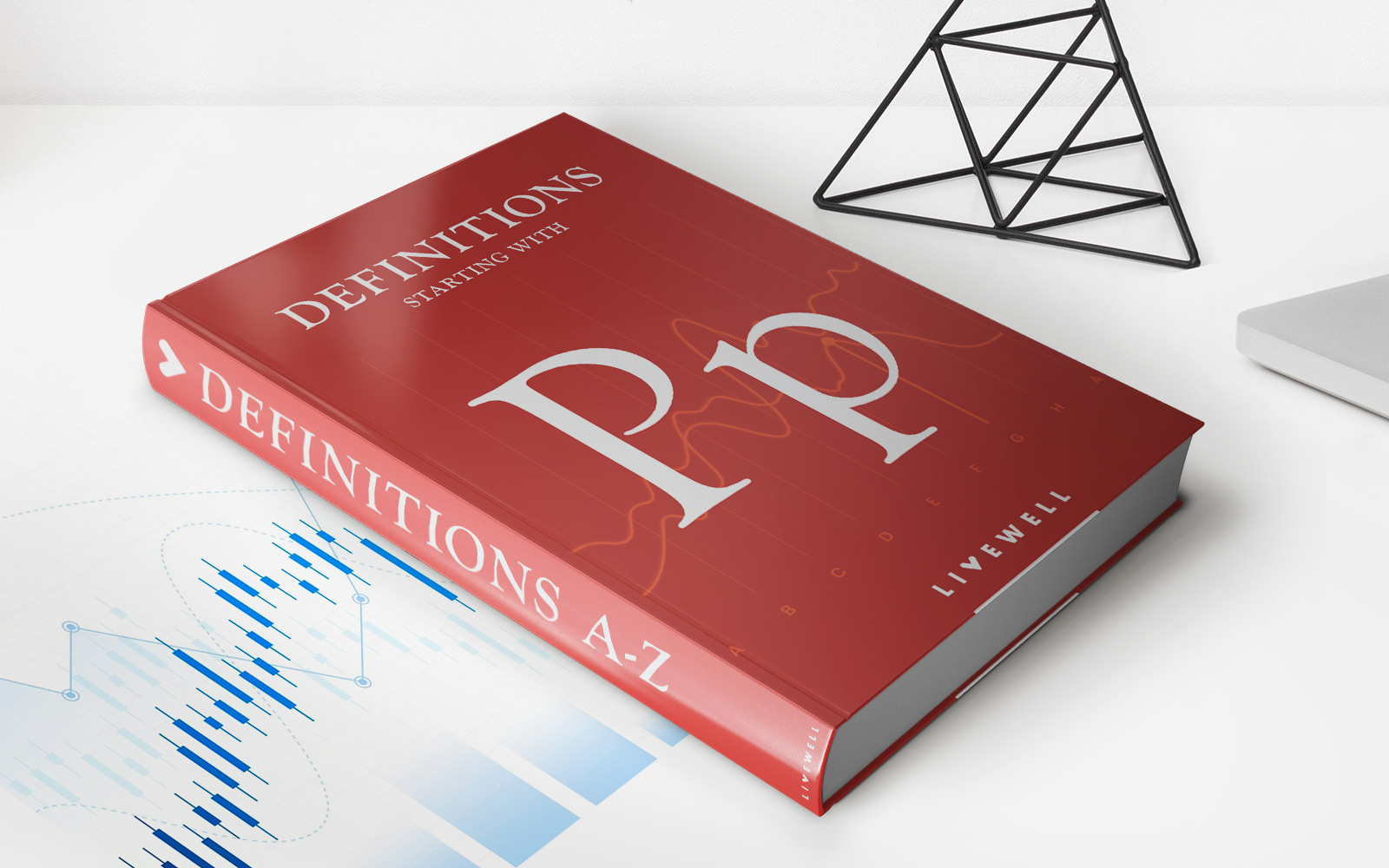Home>Finance>What Happens When A Car Accident Claim Exceeds Insurance Limits?


Finance
What Happens When A Car Accident Claim Exceeds Insurance Limits?
Published: November 10, 2023
Learn what happens when a car accident claim exceeds insurance limits and how it can impact your finances. Get insights from experts to protect yourself financially.
(Many of the links in this article redirect to a specific reviewed product. Your purchase of these products through affiliate links helps to generate commission for LiveWell, at no extra cost. Learn more)
Table of Contents
Introduction
Car accidents can be stressful and overwhelming experiences, and when an accident results in significant damage or injuries, it is essential to have insurance coverage to help compensate for the losses. However, sometimes the costs associated with a car accident can exceed the limits of an insurance policy, leaving victims wondering what their options are. In this article, we will explore what happens when a car accident claim exceeds insurance limits and discuss the potential avenues for seeking additional compensation.
Insurance limits refer to the maximum amount that an insurance policy will cover in the event of an accident. These limits are typically set by the insurance company and can vary depending on the type of coverage and the policyholder’s chosen coverage limits. For example, liability coverage may have separate limits for bodily injury per person, bodily injury per accident, and property damage per accident.
When a car accident claim exceeds these insurance limits, it means that the amount of compensation sought by the injured party or parties is greater than what the insurance policy will cover. In such cases, the at-fault driver or the insurance company may be responsible for paying the excess amount out-of-pocket.
It is important to note that insurance policies are designed to protect policyholders up to their coverage limits. If the claim exceeds these limits, it can create a significant financial burden for the at-fault driver. In some cases, this may even lead to personal bankruptcy.
In the following sections, we will delve deeper into what happens when a car accident claim exceeds insurance limits and explore the various options available to seek additional compensation.
Understanding Insurance Limits
Insurance limits play a crucial role in understanding how much coverage an insurance policy provides in the event of a car accident. These limits are predetermined by the insurance company and can vary depending on the type of coverage, policyholder’s preferences, and applicable state laws. To fully comprehend what happens when a car accident claim exceeds insurance limits, it is essential to have a clear understanding of how these limits work.
Insurance policies generally have separate limits for different types of coverage. These commonly include:
- Bodily Injury Liability: This coverage is intended to compensate for the medical expenses, lost wages, and pain and suffering of the other party involved in the accident if the policyholder is at fault. The insurance policy may specify separate limits for bodily injury per person and bodily injury per accident.
- Property Damage Liability: This coverage pays for the repair or replacement of the other party’s damaged property, such as their vehicle or any other property involved in the accident. Similar to bodily injury liability, property damage liability also has its own specified limit.
- Uninsured/Underinsured Motorist: This coverage comes into play if the at-fault driver does not have insurance or has insufficient coverage to fully compensate for the losses. It provides coverage for the policyholder’s medical expenses, lost wages, and other damages in the event of an accident with an uninsured or underinsured driver.
- Medical Payments: This coverage, also known as MedPay, reimburses for the medical expenses incurred by the policyholder and their passengers, regardless of who was at fault in the accident. It is an optional coverage that may have its own separate limit.
- Comprehensive and Collision: These coverages are typically optional and cover the damage to the policyholder’s vehicle. Their limits may vary based on the value of the vehicle and the deductible chosen by the policyholder.
It is important to review and understand the insurance policy to know the specific limits and coverages that apply in a particular situation. These limits are crucial in determining the maximum amount that the insurance company will pay in the event of a claim.
Keep in mind that insurance limits can differ from state to state, and it is essential to comply with the requirements set by the applicable state laws. Additionally, policyholders can opt for higher coverage limits by paying higher premiums, ensuring they have more protection in the event of an accident.
Now that we have a better understanding of insurance limits, let’s explore what happens when a car accident claim exceeds these limits and how it affects the parties involved.
What Happens When a Car Accident Claim Exceeds Insurance Limits
When a car accident claim exceeds the insurance limits, it can create significant financial and legal complexities for all parties involved. Let’s take a closer look at the potential scenarios and what happens in such cases.
1. Excess Liability: If the at-fault driver’s insurance policy does not have enough coverage to fully compensate for the damages, the policyholder may be personally responsible for paying the excess amount out-of-pocket. This means that the at-fault driver may have to bear the financial burden of the remaining costs, including medical expenses, property damage, and other related expenses.
2. Settlement Negotiations: In some cases, the injured party may negotiate with the at-fault driver’s insurance company for a settlement that exceeds the policy limits. The insurance company may choose to pay the policy limit and require the at-fault driver to pay the remaining amount. Alternatively, the insurance company may decide to negotiate a higher settlement amount if it believes it is in their best interest to avoid a potential lawsuit.
3. Personal Assets: If the at-fault driver does not have enough personal funds to cover the excess amount, the injured party may pursue legal action to seize their personal assets. This could include garnishing wages, placing liens on property, or other legal means to collect the additional compensation.
4. Insufficient Compensation: In cases where the at-fault driver does not have adequate personal assets or funds to cover the excess amount, the injured party may only be able to recover up to the limits of the insurance policy. This can lead to an insufficient amount to fully compensate for the damages, leaving the injured party with a financial burden to bear.
It is important to remember that the specific outcome when a car accident claim exceeds insurance limits may vary depending on the circumstances, the insurance policy, and applicable state laws. Seeking legal advice from an experienced personal injury attorney is recommended to understand the available options and protect your rights in such situations.
Next, we will explore additional compensation options that may be available to the injured party when a car accident claim exceeds insurance limits.
Seeking Additional Compensation Options
When a car accident claim exceeds insurance limits, it is essential for the injured party to explore other potential avenues for seeking additional compensation. While the insurance limits may restrict the amount they can recover directly from the at-fault driver or their insurance company, there are still some options to consider. Let’s discuss a few potential avenues:
1. Personal Injury Protection: Depending on the state and the injured party’s insurance policy, they may have Personal Injury Protection (PIP) coverage. PIP coverage provides compensation for medical expenses, lost wages, and other damages regardless of who was at fault in the accident. It can help bridge the gap between the insurance limits and the actual damages incurred.
2. Health Insurance: If the injured party has health insurance, it may cover some or all of their medical expenses resulting from the accident. Utilizing health insurance can help offset the financial burden of medical costs that exceed the insurance limits.
3. Negotiating with Medical Providers: In some cases, medical providers may be willing to negotiate their fees or set up a payment plan to accommodate the injured party’s financial limitations. Exploring these options can help reduce the out-of-pocket expenses.
4. Government Assistance Programs: Depending on the severity of the injuries and the individual’s financial situation, they may be eligible for government assistance programs. These programs can provide financial support for medical expenses and other related costs.
5. Third-Party Liability: In some instances, there may be additional parties who share liability for the accident. For example, if the accident was caused by a defective product, the injured party may seek compensation from the product manufacturer. It is crucial to consult with an attorney to determine if there are any viable third-party liability claims.
6. Civil Lawsuit: If all other options have been exhausted and the damages still exceed the insurance limits, the injured party may choose to file a civil lawsuit against the at-fault driver to pursue additional compensation. This litigation process can be complex and time-consuming, but it may provide an opportunity to recover the full extent of the damages, including pain and suffering, lost future earnings, and other non-economic losses.
It is important to consult with a knowledgeable personal injury attorney who can assess the specific circumstances of the accident and guide the injured party through the legal process.
Next, we will explore the personal liability of the at-fault driver when a car accident claim exceeds insurance limits.
Personal Liability of the At-Fault Driver
When a car accident claim exceeds insurance limits, the at-fault driver may face personal liability for the excess amount. This means that they may be held personally responsible for covering the remaining costs associated with the accident. Here’s what you need to know about the personal liability of the at-fault driver:
1. Assets and Income: If the at-fault driver has sufficient personal assets or a stable source of income, they may be required to pay the excess amount out-of-pocket to cover the remaining costs. This can include using personal savings, liquidating assets, or making payment arrangements with the injured party.
2. Wage Garnishment: In some cases, if the at-fault driver fails to pay the excess amount voluntarily, the injured party may obtain a judgment and seek to garnish their wages. This means that a portion of the at-fault driver’s wages will be withheld to satisfy the outstanding amount owed.
3. Property Liens: Another option for the injured party is to place a lien on the at-fault driver’s property. This can include real estate, vehicles, or other valuable assets. The lien ensures that the injured party is compensated when the property is sold or transferred.
4. Bankruptcy: In some cases, when a car accident claim exceeds insurance limits, the at-fault driver may consider filing for bankruptcy. Bankruptcy can provide some relief from overwhelming debt, including the excess amount owed to the injured party. However, it is important to note that not all types of debt may be dischargeable in bankruptcy, and it can have long-lasting implications on the at-fault driver’s financial future.
5. Insurance Policy Exclusions: It is important to review the insurance policy to determine if there are any exclusions or limitations that may impact the at-fault driver’s personal liability. Some policies may have exclusions for certain types of damages or circumstances, limiting the at-fault driver’s responsibility for those specific costs.
It is worth noting that personal liability for the excess amount can vary depending on individual circumstances, state laws, and the specific terms of the insurance policy. Seeking legal advice from a personal injury attorney can help navigate through the complexities of personal liability and protect the rights of both parties involved.
Next, let’s explore the role of Uninsured/Underinsured Motorist coverage when a car accident claim exceeds insurance limits.
The Role of Uninsured/Underinsured Motorist Coverage
Uninsured/Underinsured Motorist (UM/UIM) coverage is an important component of car insurance policies that can play a significant role when a car accident claim exceeds insurance limits. UM/UIM coverage protects policyholders when they are involved in an accident with a driver who either lacks insurance coverage or has insufficient coverage to fully compensate for the damages. Here’s how UM/UIM coverage can be beneficial:
1. Protection in Underinsured Situations: If the at-fault driver’s insurance policy does not have sufficient coverage to compensate for the damages, the injured party can turn to their own UM/UIM coverage. This coverage can help bridge the gap between the actual damages incurred and the limits of the at-fault driver’s insurance policy.
2. Compensation for Hit-and-Run Accidents: When the at-fault driver flees the scene after causing an accident, it can be challenging to hold them accountable. In such cases, UM/UIM coverage can step in and provide compensation for the damages, even if the at-fault driver cannot be identified or does not have insurance.
3. Supplemental Coverage: UM/UIM coverage can act as an additional layer of protection for policyholders, even in accidents where the at-fault driver has adequate insurance coverage. It can provide extra compensation if the damages exceed the limits of the at-fault driver’s insurance policy.
4. Coverage for Uninsured Drivers: In cases where the at-fault driver does not have any insurance coverage at all, UM/UIM coverage becomes particularly crucial. It can provide compensation for the injured party’s medical expenses, lost wages, and other damages, ensuring that they are not left with a financial burden due to someone else’s negligence.
It is important to note that UM/UIM coverage is typically optional and may have separate coverage limits. Policyholders can choose to include this coverage in their policy and decide on the coverage limits based on their individual needs and budget.
When a car accident claim exceeds the insurance limits, having UM/UIM coverage can be invaluable. It provides an additional source of compensation that can help cover the remaining costs associated with the accident.
Next, let’s explore the option of considering legal action when a car accident claim exceeds insurance limits.
Considering Legal Action
When a car accident claim exceeds insurance limits, one option to pursue additional compensation is to consider taking legal action. Filing a lawsuit against the at-fault driver can provide an opportunity to recover the full extent of the damages. Here are some important factors to consider when deciding whether to pursue legal action:
1. Severity of Damages: If the damages resulting from the car accident are significant, such as extensive medical expenses, long-term disabilities, or substantial property damage, it may be necessary to seek legal recourse to recover adequate compensation.
2. Liability Disputes: If there is a dispute regarding who was at fault for the accident, or if the at-fault driver’s insurance company refuses to accept liability, a lawsuit can help establish the responsible party and hold them accountable for the damages.
3. Negligence or Wrongful Conduct: If the at-fault driver’s actions were egregious or involved gross negligence, such as drunk driving or reckless behavior, pursuing legal action may be necessary to deter such behavior and obtain fair compensation.
4. Insurance Coverage Limitations: If the at-fault driver does not have enough personal assets to cover the excess amount and their insurance policy offers limited coverage, a lawsuit may be the only option to recover the additional compensation needed.
5. Time Limitations: It is important to consider the statute of limitations for filing a lawsuit. Each state has its own time limits, usually ranging from one to six years. Consulting with a personal injury attorney as soon as possible can ensure that the claim is filed within the required timeframe.
6. Professional Legal Guidance: Engaging the services of an experienced personal injury attorney is crucial when considering legal action. They can provide guidance, assess the strength of the case, collect evidence, negotiate with insurance companies, and represent the injured party’s best interests in court if necessary.
Filing a lawsuit is a complex and time-consuming process, but it can provide the injured party with an opportunity to seek the full compensation they deserve. It is important to consult with an attorney to evaluate the viability of a lawsuit and navigate through the legal intricacies effectively.
Next, let’s conclude the article.
Conclusion
When a car accident claim exceeds insurance limits, it can be a challenging and overwhelming situation for all parties involved. However, it is essential to understand that there are potential options available to seek additional compensation.
First and foremost, it is crucial to have a clear understanding of insurance limits and the coverage provided by the insurance policy. Knowing the specific details, including separate limits for different types of coverage, can help manage expectations and make informed decisions.
If a car accident claim exceeds insurance limits, seeking additional compensation options becomes necessary. This can include utilizing Personal Injury Protection (PIP) coverage, health insurance, negotiating with medical providers, exploring government assistance programs, and potentially pursuing third-party liability claims.
In some cases, the personal liability of the at-fault driver may come into play, requiring them to cover the excess amount out-of-pocket. This can involve using personal assets, wage garnishment, or other means of collecting the remaining costs.
Uninsured/Underinsured Motorist (UM/UIM) coverage can be instrumental in bridging the gap when the at-fault driver’s insurance is insufficient. This coverage can provide compensation for uninsured or underinsured drivers, hit-and-run accidents, and when damages exceed the limits of the at-fault driver’s insurance policy.
If all other options have been exhausted, pursuing legal action may be necessary to recover the full extent of the damages. Filing a lawsuit can help establish liability, address disputes, and provide an opportunity for fair compensation.
It is crucial for individuals dealing with a car accident claim that exceeds insurance limits to consult with a personal injury attorney. An experienced attorney can navigate the legal complexities, evaluate the available options, and advocate for the injured party’s rights throughout the process.
In conclusion, while the situation may seem daunting, understanding insurance limits, exploring alternative compensation options, and considering legal action can help an injured party seek the additional compensation needed to recover from the damages resulting from a car accident that exceeds insurance limits.














